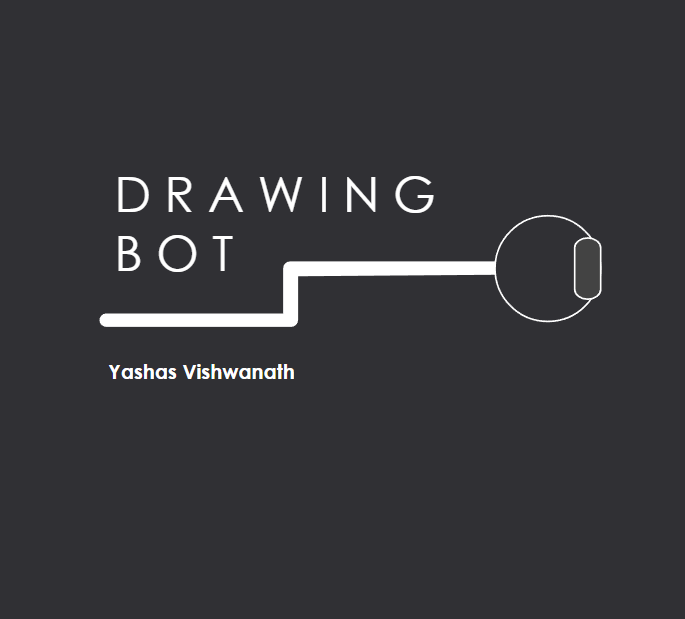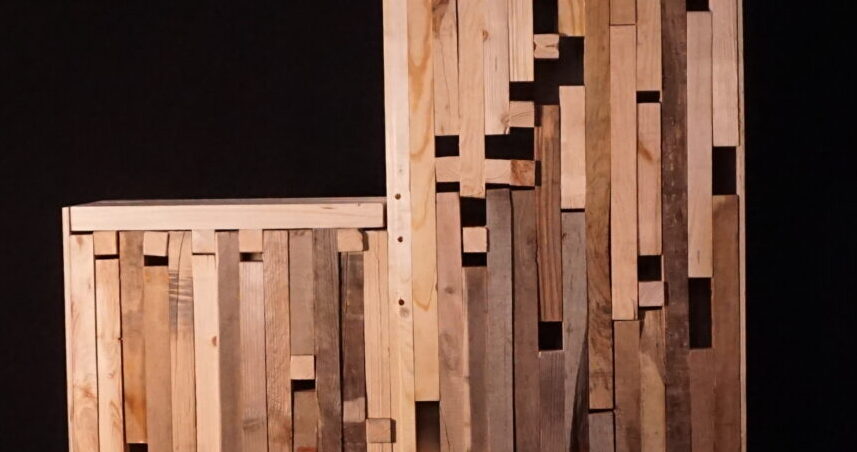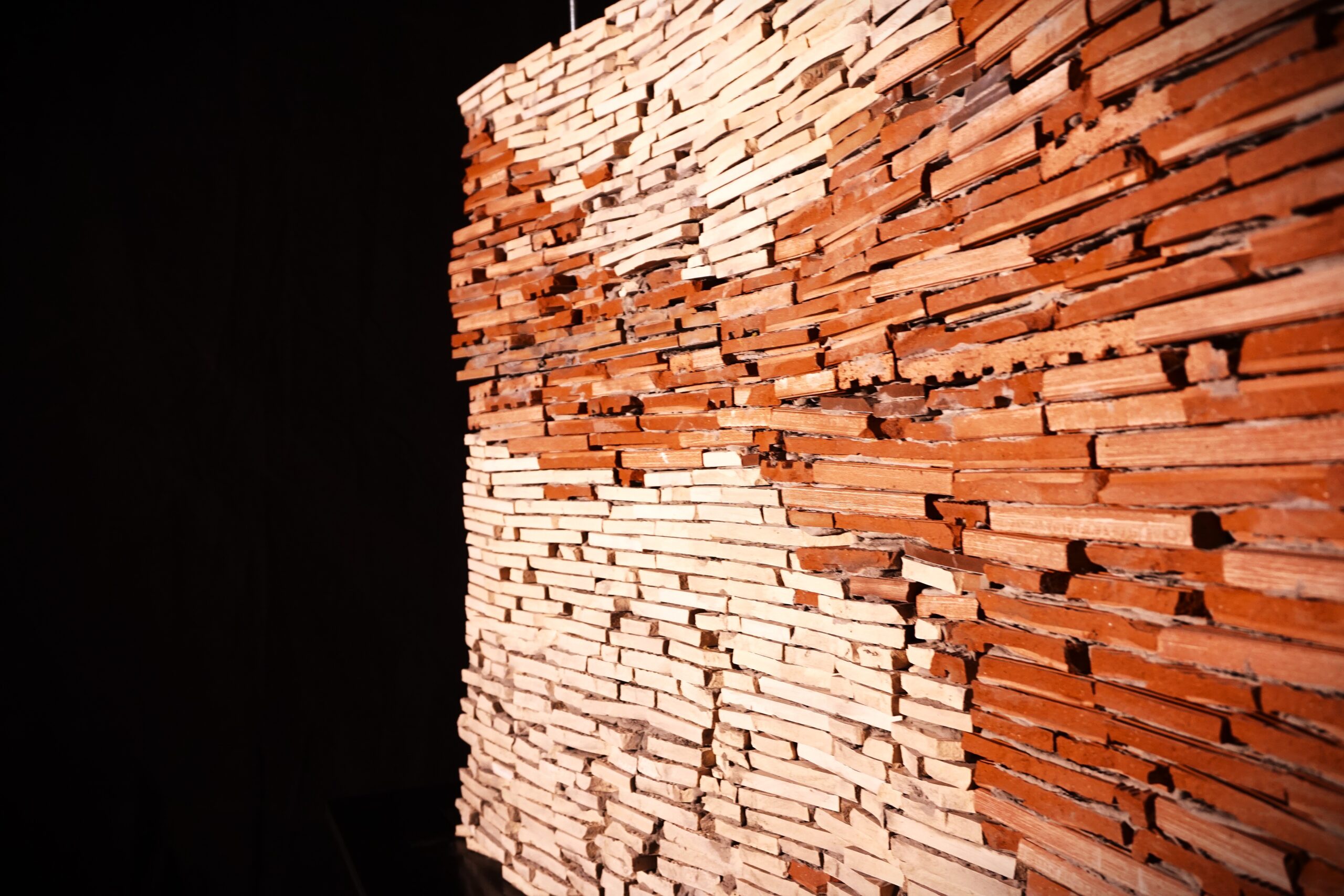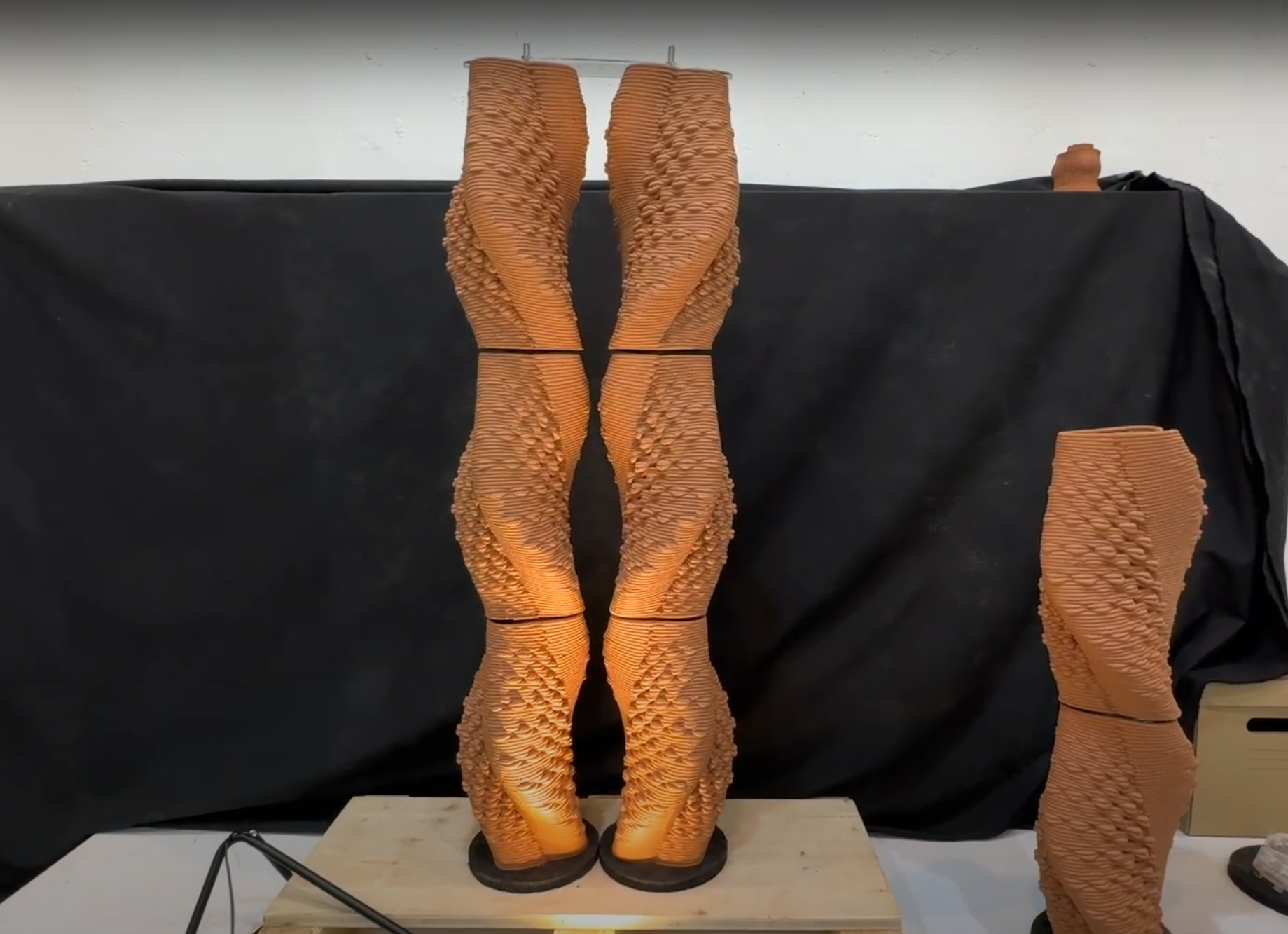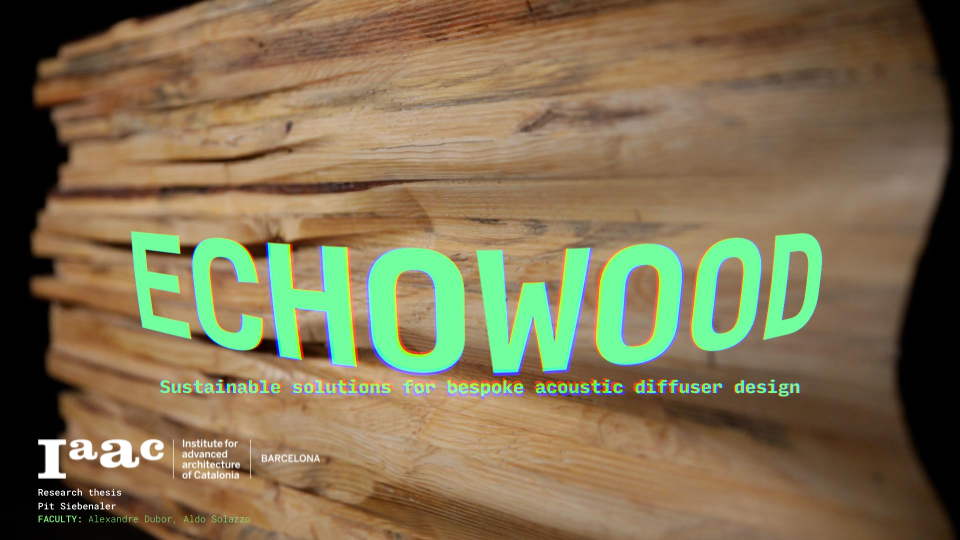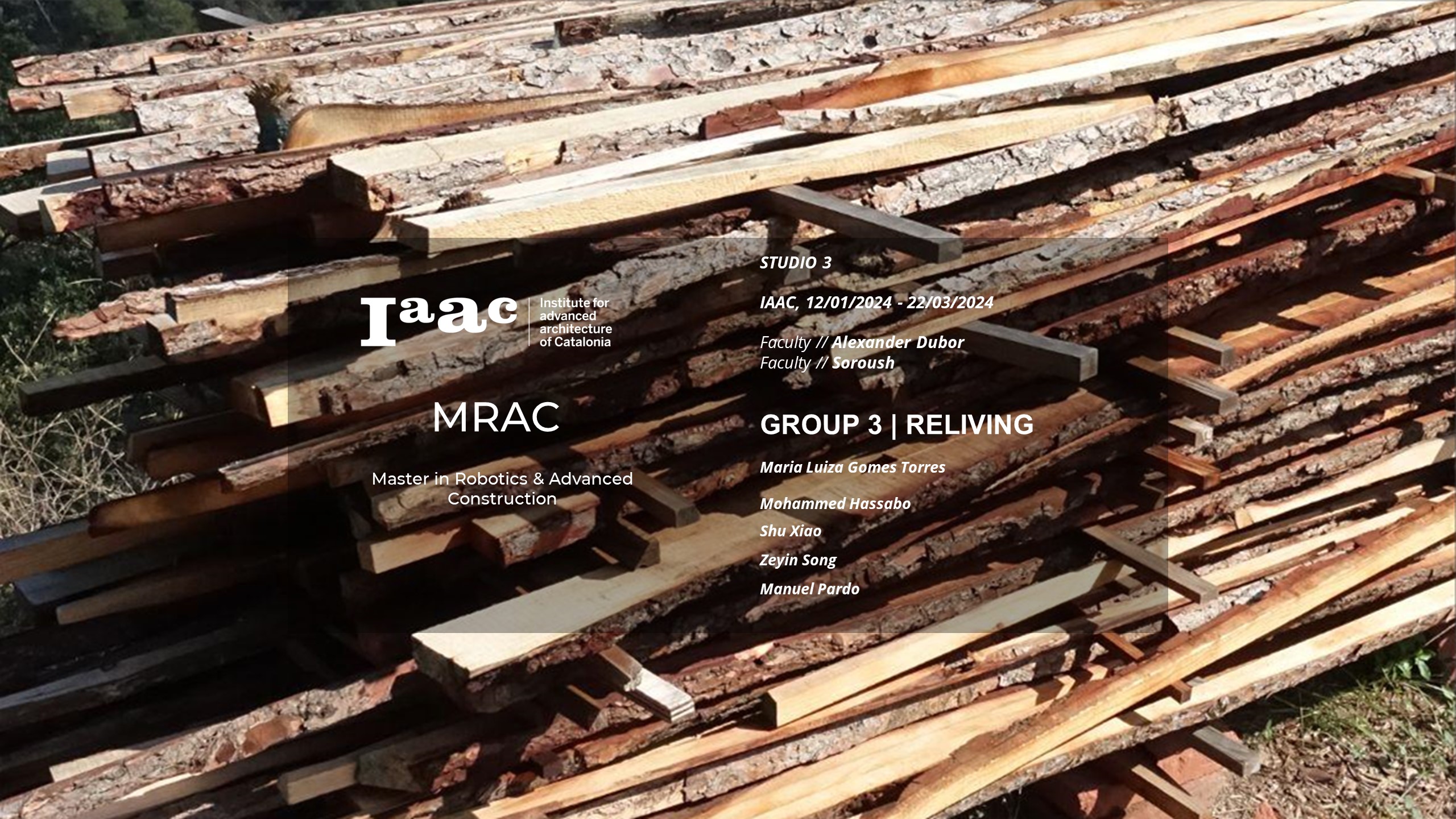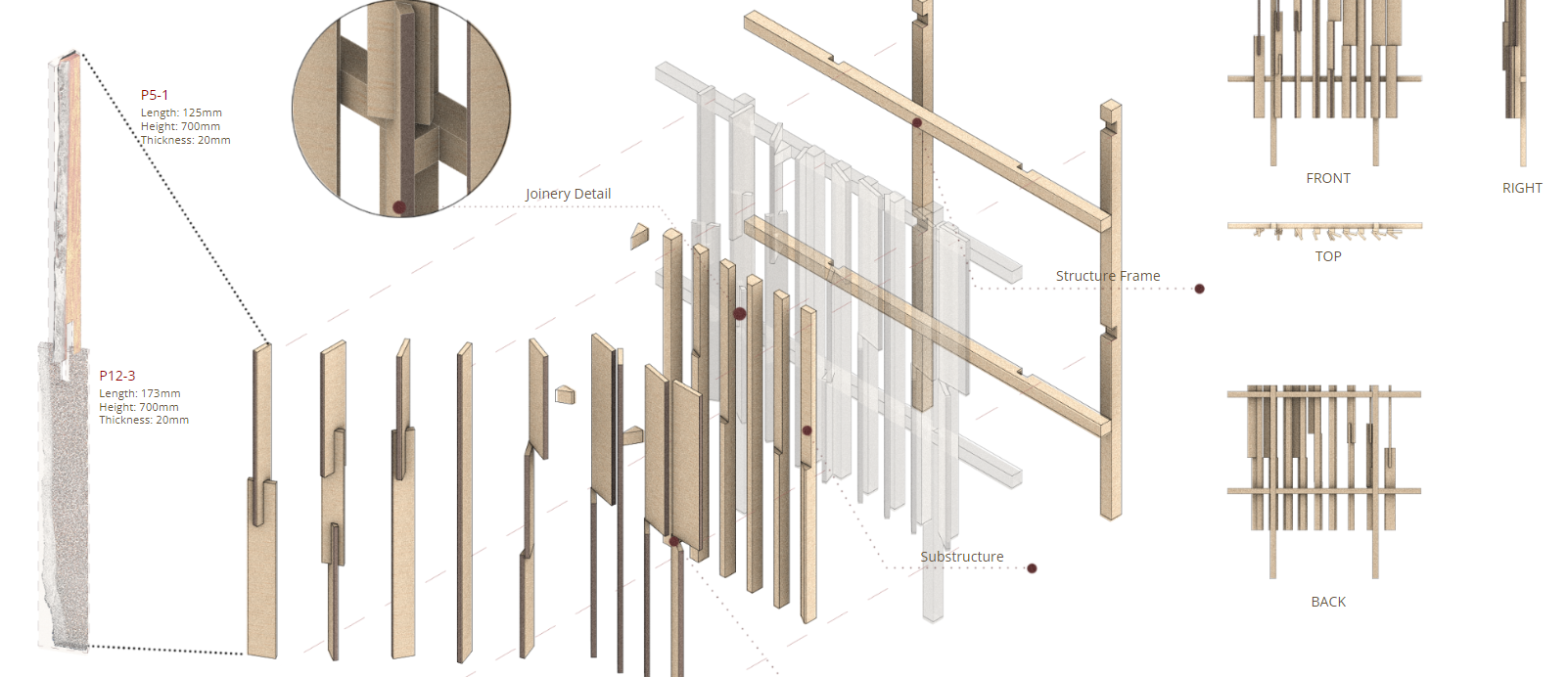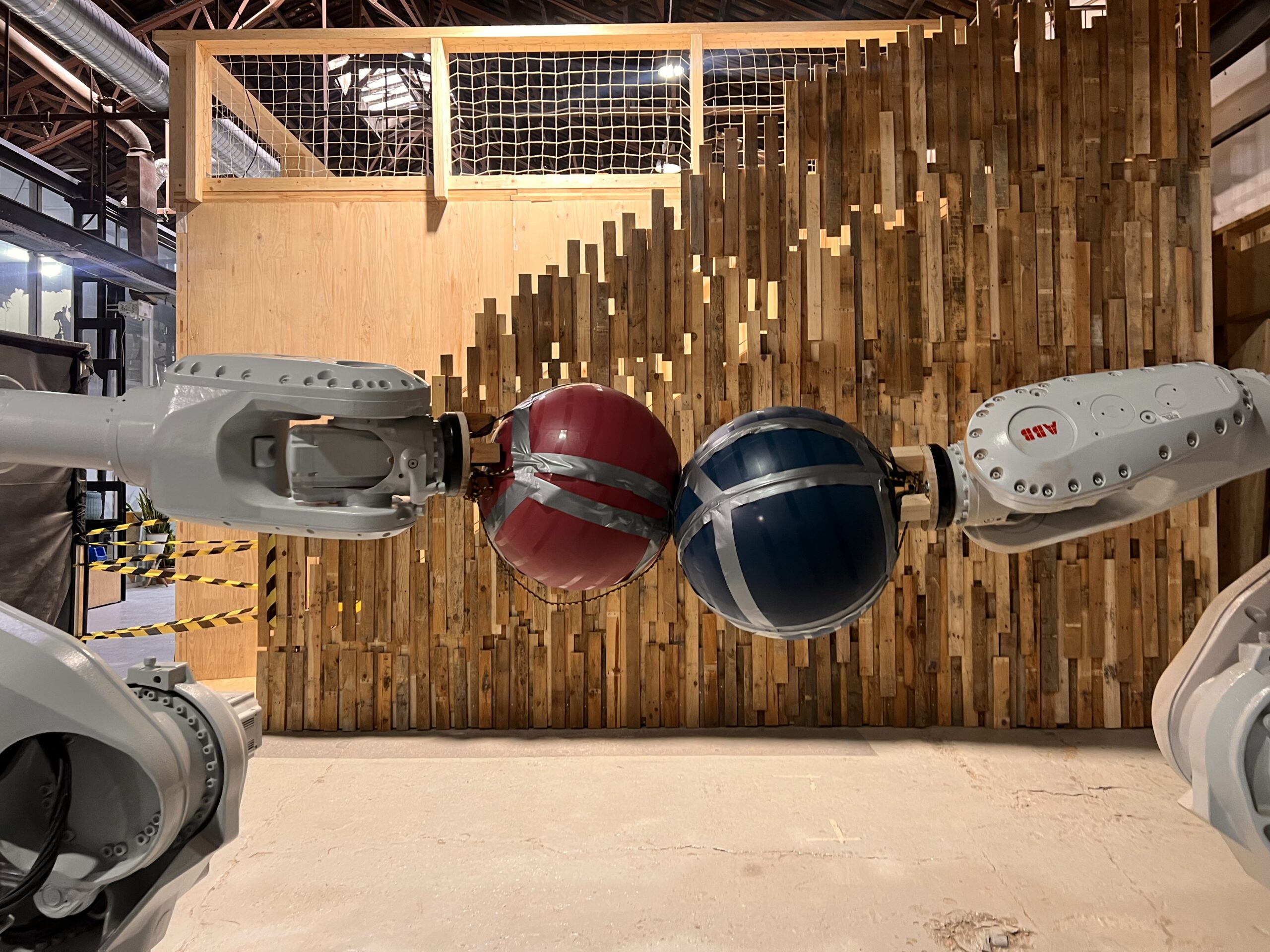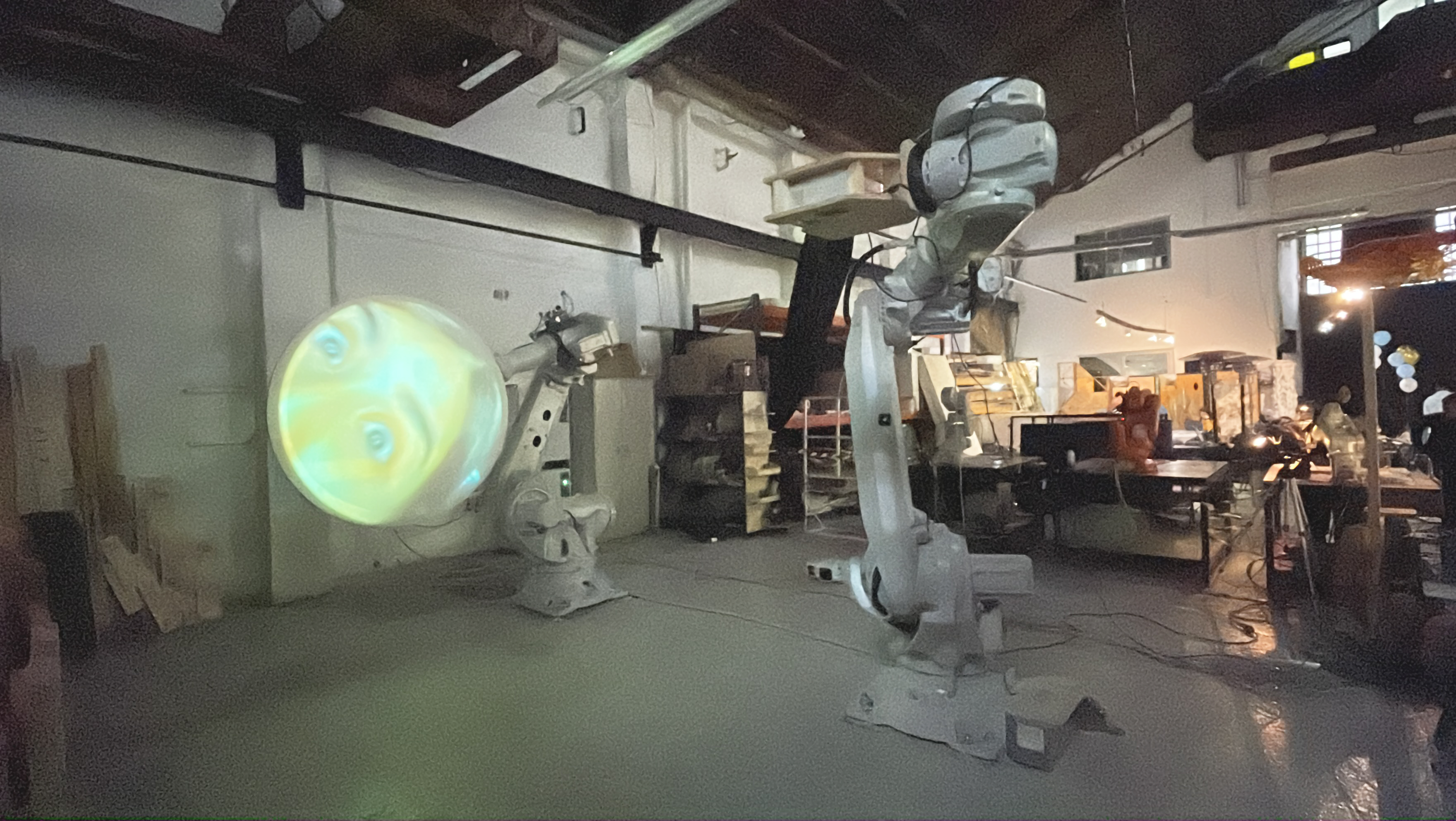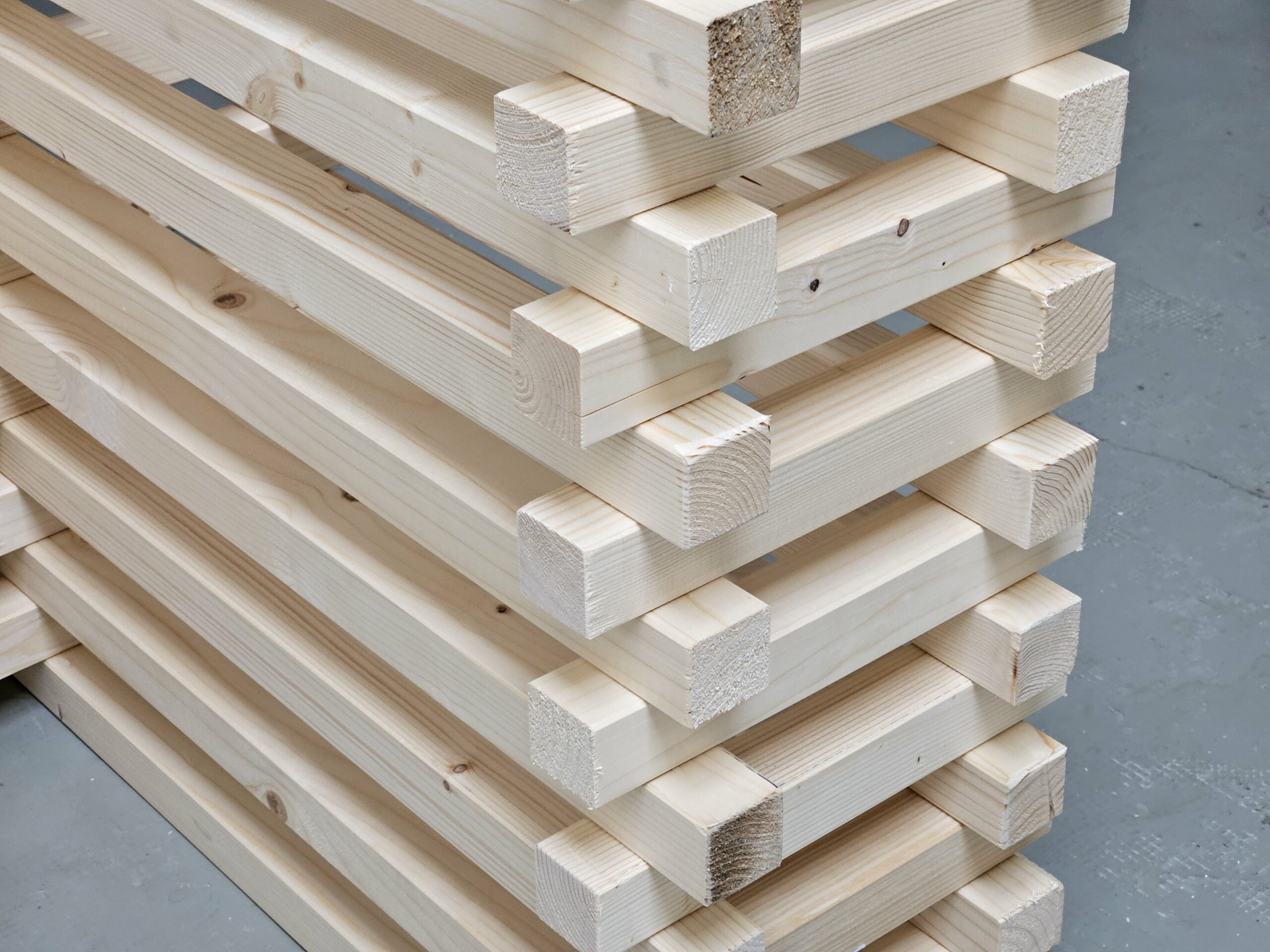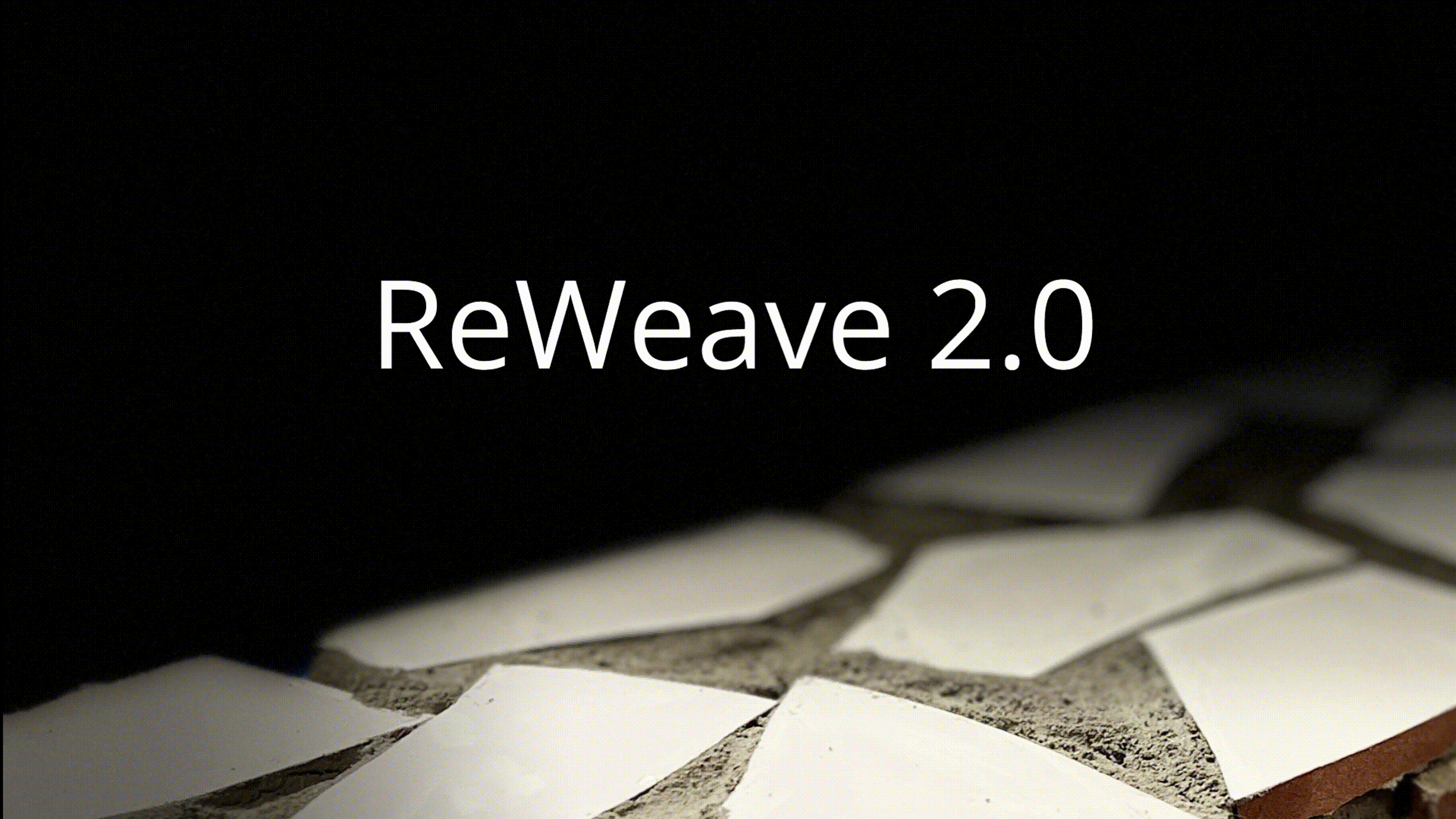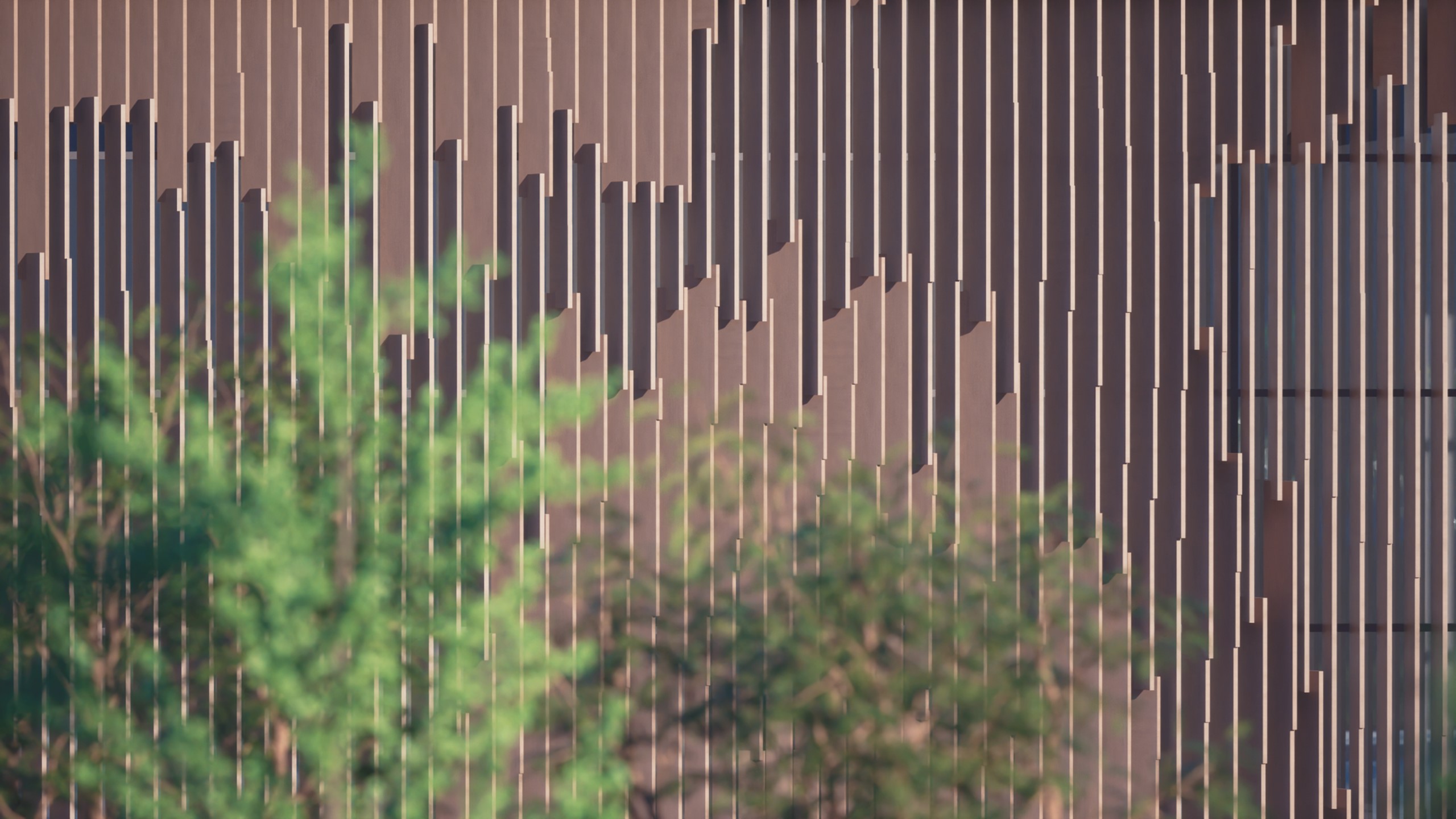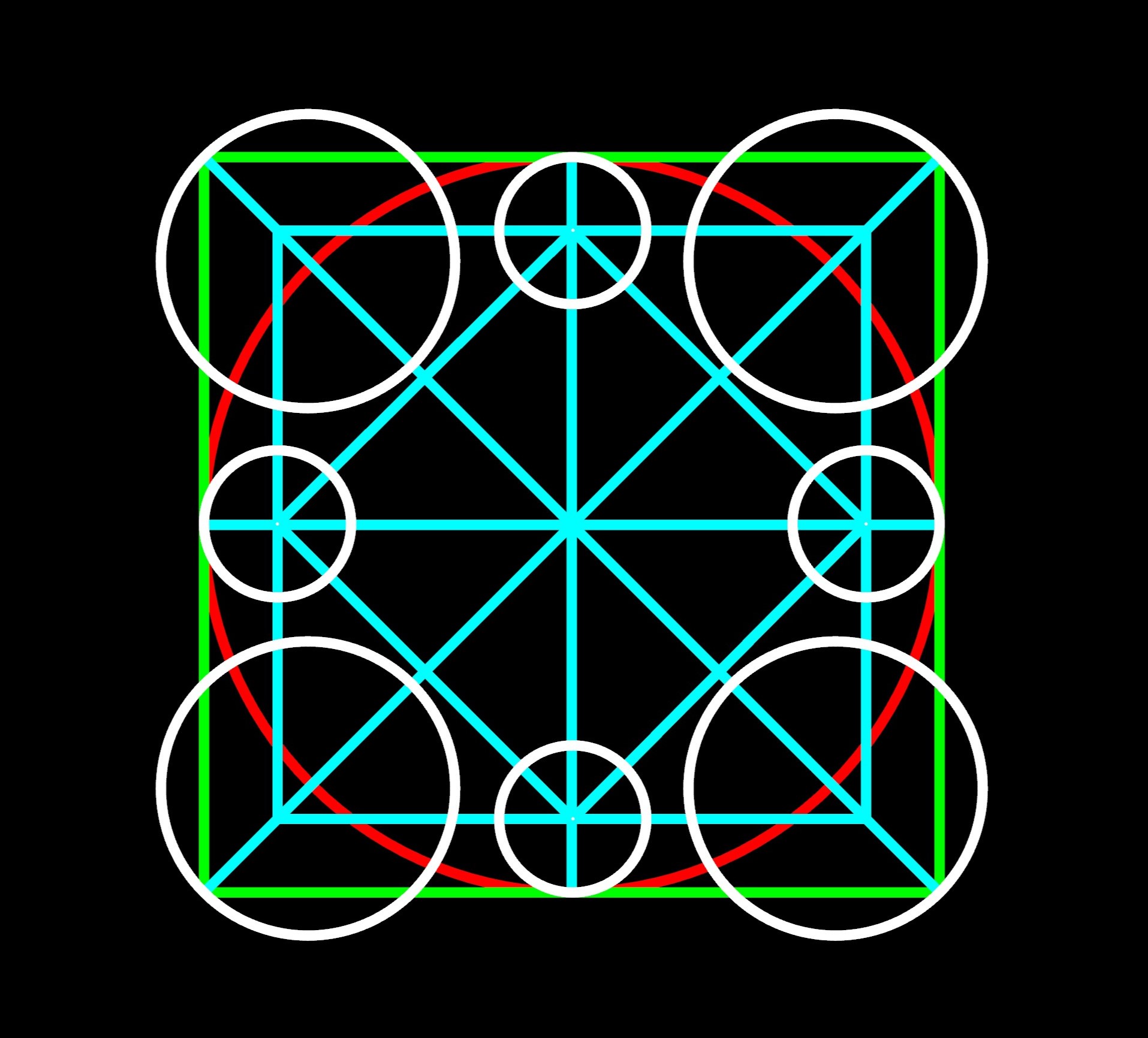The Master in Robotics and Advanced Construction (MRAC) seeks to train a new generation of interdisciplinary professionals who are capable of facing our growing need for a more sustainable and optimised construction ecosystem. The Master is focused on the emerging design and market opportunities arising from novel robotic and advanced manufacturing systems.
Through a mixture of seminars, workshops, and studio projects, the master programme challenges the traditional processes in the Construction Sector. It investigates how advances in robotics and digital fabrication tools change the way we build and develop processes and design tools for such new production methods.
Timber Narratives
Building on the principles of disassembly explored last semester, this phase of the Timber Narratives project delves deeper into advanced data-driven design strategies. We now capture and utilize timber colour values through enhanced scanning technologies, integrating this data into our designs. Additionally, we’ve implemented machine learning with logistic regression for precise categorization of timber for … Read more
ReWeave_3.0
Abstract: The ReWeave project develops a robotic system to repurpose construction and demolition (C&D) waste into functional, attractive walls, enhancing human-robot collaboration. We created a database by scanning broken tiles to extract shape, size, and color information, then developed custom nesting algorithms to optimize tile arrangement. The workflow includes scanning tiles, exporting outlines via ROS, … Read more
MURO DE AGUA
INTRO This study investigates innovative joinery solutions for modular evaporative cooling systems using 3D printed clay. With the rising global temperatures and subsequent increased demand for energy-consuming air conditioning systems, there is a crucial need for sustainable cooling alternatives. The research focuses on addressing the challenges of material shrinkage and joinery reliability in 3D printed … Read more
ECHOWOOD
SUSTAINABLE SOLUTIONS FOR BESPOKE ACOUSTIC DIFFUSER DESIGN A considerable amount of construction and wood waste is generated each year, mostly landfilled or burned for energy, contributing to severe environmental effects. The management of this waste is a significant challenge as it is often not suitable for secondary use. In this context, the circular economy concept … Read more
RELIVING
State of the Art and Minimum Value Proposition There is an overstocking of small to medium trees over Europe due to poor firing and soil cultivation conditions, most of this trees have the diameter of 10-25 cm and depending on the species and cultivation conditions some of then are crooked and can’t be used by … Read more
Agent-based Manufacturing System
Industry Setup Relevance: ABMS could be a twist on traditional manufacturing by using software agents to control different parts of the process. Imagine a factory where machines, workstations, and even software programs aren’t just following instructions but can somewhat act and decide independently. This helps in faster problem-solving mechanisms and could help reduce human intervention … Read more
Factory Floor: Automating Raw Wood Panels
The aim of this Seminar was to imagine a scenario where the Studio Project could be imagined on an industry floor with full automation. In order to understand the workflow and position of each station to fabricate a facade made from raw edge sticks an an agent based system was sketched as diagrams in order … Read more
Wired Warriors
Aim “Create a range of robotic mini-games showcasing dexterity and quick reflexes, ideal for casual enjoyment.“ For this one week workshop, we drew inspiration from various games such as infinite passes, penalty shootouts, and boxing, aiming to adapt them for robotic play. Initially leaning towards infinite passes (football), we ultimately found boxing more compatible with … Read more
Kino
At the workshop led by Madeline Gannon, we had the chance to delve into robotic movement, prioritizing creative freedom over conventional targets like accuracy and repeatability. The workshop was designed as a breeding ground for creativity, facilitated by software components that allowed exploration without the constraints of a kinematic solver. Given the project’s one-week duration … Read more
Timber Narratives
Leveraging Computer Vision for Sustainable Design with dimensional waste timber Building upon the established design principles of disassembly explored in the prior semester, Timber Narratives this semester investigated the potential of computer vision and image analytics to further optimize material conditioning and manufacturing processes for dimensional waste timber. This iterative approach aimed to integrate data-driven … Read more
ReWeave 2.0
The Context Aim State Of The Art The Workflow System Architecture Robotic Cell Scanning – Robotic cell Scanning Nesting – Initial Experiments Nesting Custom logic Iteration A Nesting Custom logic Iteration B Binder – Geopolymer with alkaline activators – Sodium silicate Binder – Geopolymer with alkaline activators – Sodium silicate and Sodium hydroxide Binder – … Read more
Reliving
State of the Art Raw Timber and AEC Industry Wood waste is often disregarded in the wood industry and the construction industry. Majority of wood used in construction is sawn and processed wood that not only generates waste on its production but it is also associated with high CO2 emissions, because of the embodied energy … Read more
Robotic Manifesto: Embracing Advanced manufacturing in complex architectural geometries
Introduction: In the realm of architecture, we stand at a pivotal moment where traditional construction methods struggle to meet the demands for intricate architectural forms while sustainability concerns continue to mount. As students of the Master in Robotics and Advanced Construction program, guided by the expertise of Mariana Popescu, we advocate for a paradigm shift … Read more
Follow Me
Aim To explore innovative parametric tiling designs through the utilization of robotic tiling setups. The project aim is to utilize the functions of COMPAS framework and its extensions for robotic planning. Also, to incorporate computer vision and scanning information into the tiling process to enhance precision and efficiency. Design Logic Inspired by the idea of … Read more
Robotic Gaudi
AIM DESIGN The three distinct design methodologies we explored employed grayscale image mapping, where the gray areas functioned as attractors and filters for colored circles. Our second experiment focused on employing curves as generators for the spatial arrangement and packing of a variety of larger circles. The third methodology extended our exploration to the incorporation … Read more

